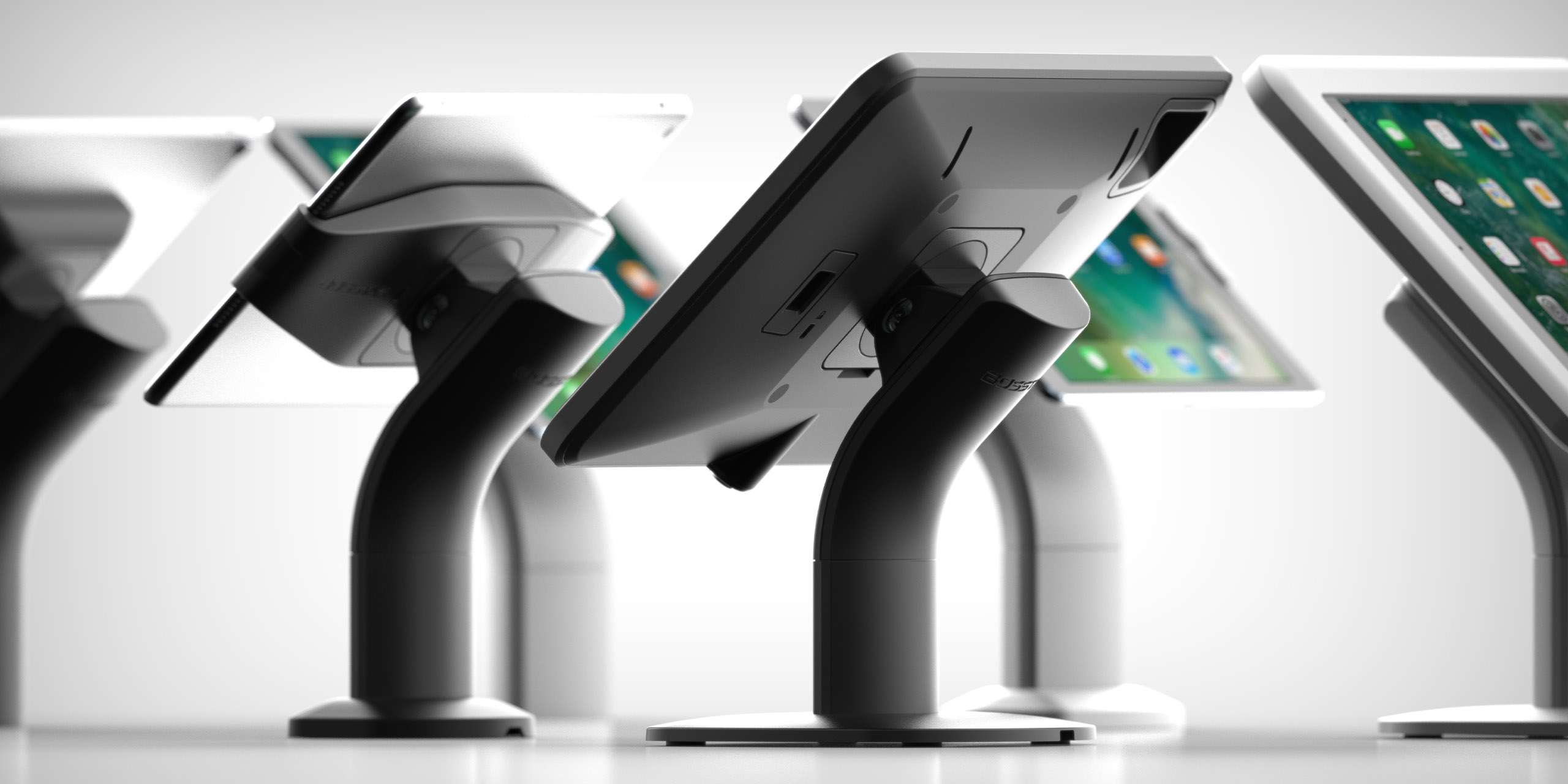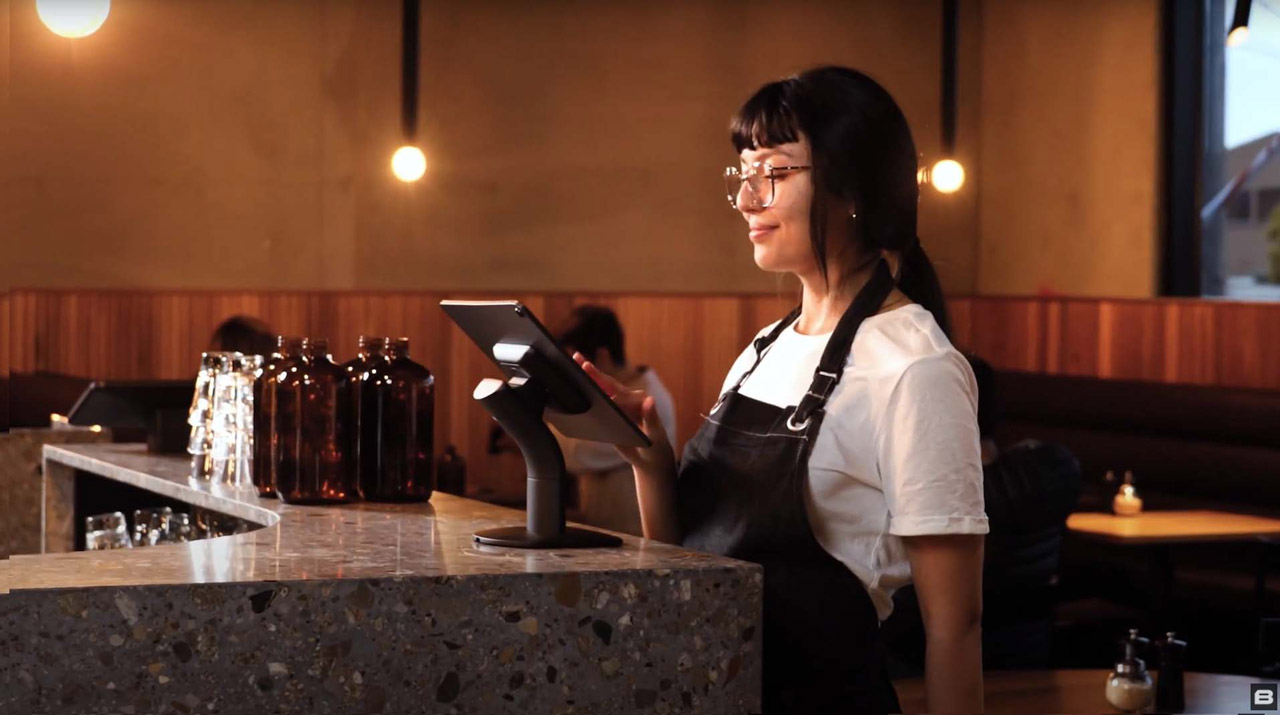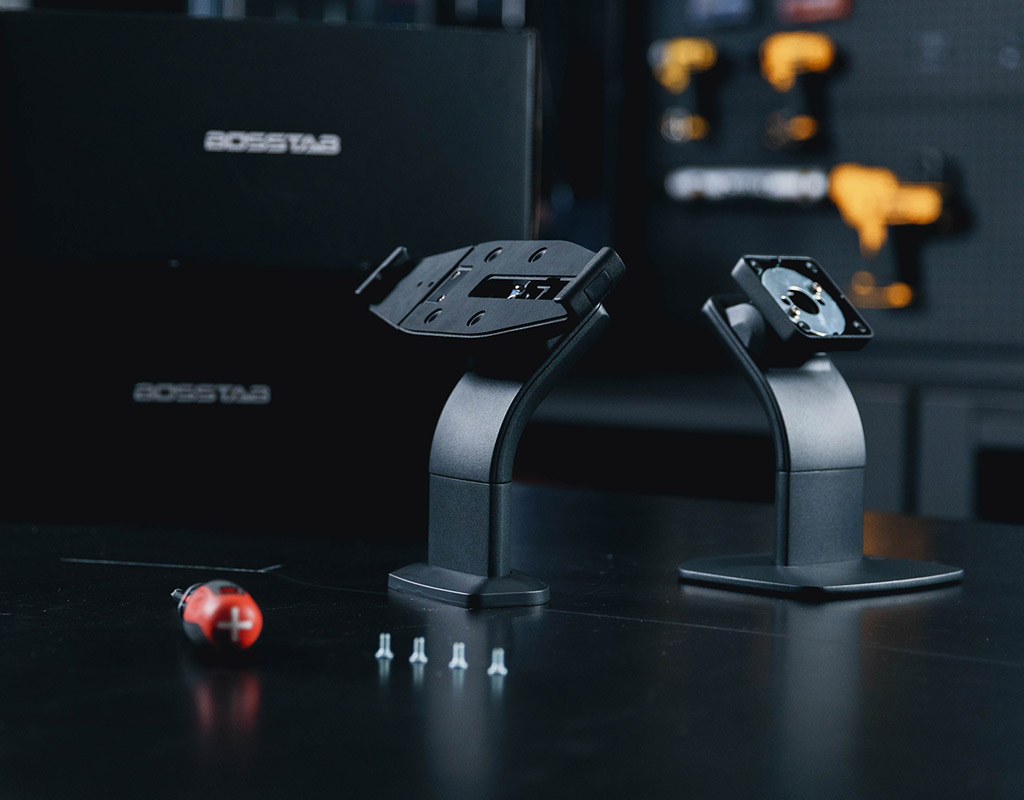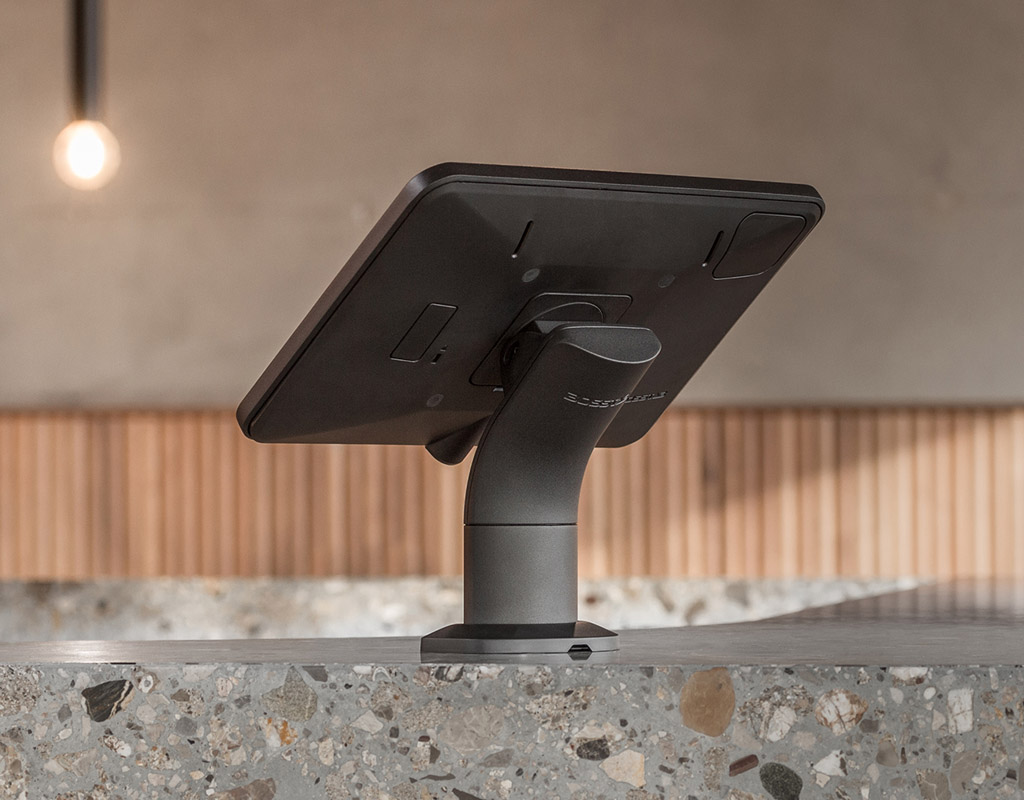Development began with a thorough market review to help identify areas for improvement and opportunities for development. We undertook trend research and compiled visual theme boards to help frame three aesthetics for further exploration.
Following this, we began to build the Product Design Specification (PDS), listing out all function and technical requirements of the project, before moving to an ideation stage, where we began to explore overall form and aesthetic, mechanical hinge implementation concepts, tablet mounting concepts and other system versatility. Using a weighted criteria matrix, we evaluated the ideas and narrowed down to three family designs for full conceptual development.
Key to developing such an innovative system was constant prototyping and improvement. Having real, tangible, analogue prototypes in hand to make tactile evaluations and test function is still such an important part of the process in our digital world. The three main reasons for prototyping from very early in the development process include:
Functional Testing
Ensuring the system and parts did what we wanted them to do.
User & Ergonomic Testing
Ensuring the system is comfortable and easy to use, identifying usability issues or areas for improvement.
System & Assembly Testing
Ensuring that components can be assembly assembled, either at factory level or by the end user as required. This type of testing often yields development of special assembly tools where required to achieve assembly of custom parts.
To bring the project to life, we engineered the system completely from the ground up to achieve the strength, aesthetic and simplicity of the concept. We use our ‘Design Loop’ methodology, a looping system of Design, Build, Test and Evaluate to address the unknowns and find the most robust solutions.









